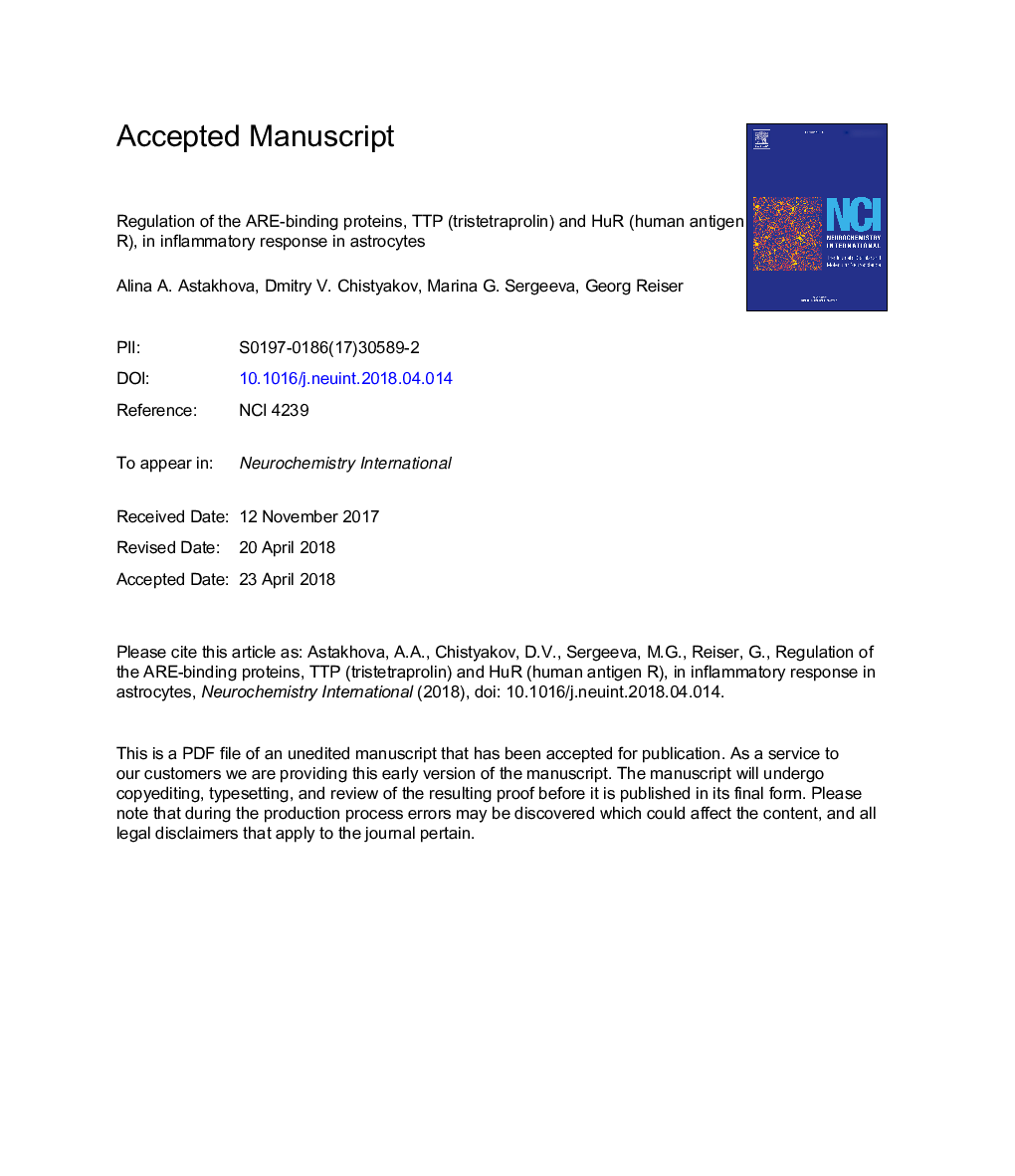| Article ID | Journal | Published Year | Pages | File Type |
|---|---|---|---|---|
| 8478866 | Neurochemistry International | 2018 | 31 Pages |
Abstract
Control of decay of mRNA containing the adenine-uridine rich elements (AREs) is an important post-transcriptional mechanism involved in the regulation of inflammatory gene expression. Two widely recognized proteins in this machinery are HuR (human antigen R) - a protein that stabilizes ARE-containing mRNA and TTP (tristetraprolin) - a protein that shortens half-lives of ARE-containing mRNA. Although HuR and TTP regulation mechanisms have been well studied in cells of hematopoietic origin, there are no respective data in astrocytes, cells of ectodermal origin which play an important role in neuroinflammation. Therefore we evaluated the existence of TTP and HuR in primary astrocytes and characterized the features of their regulation after stimulation by the proinflammatory stimuli thrombin, ATP, and agonists of TLR4, TLR2. All proinflammatory stimuli increased levels of TTP mRNA, but not HuR mRNA. Transcripts of both HuR and TTP underwent stabilization upon lipopolysaccharide (LPS) treatment, measured with the actinomycin D protocol. This effect was abolished by treatment with SB203580, an inhibitor of Ñ38 ÐÐÐ Ð. Both TTP and HuR transcripts were sensitive to modulation by anisomycin and cycloheximide. LPS induced translocation of HuR protein from nucleus to cytoplasm. TTP is localized in the cytosolic fraction and localization is not sensitive to LPS treatment. Our data for the first time reveal specificity of regulation of ARE-binding proteins in astrocytes. We propose possibilities to manipulate brain inflammatory processes via post-transcription regulatory steps in astrocytes.
Keywords
TNFαFGLhuman antigen RPGNTTPTLRp38PPARPGE2FlagellinNF-κBLPSDMEMJnkMAPKDulbecco's modified Eagle's mediumMitogen activated protein kinasesp38 MAPKAstrocytesinflammationinterleukinMRNA degradationTristetraprolintumor necrosis factor αcycloheximidecyclooxygenase 2nuclear factor kappa-light-chain-enhancer of activated B cellslipopolysaccharideAREp38 mitogen-activated protein kinasesProstaglandin E2PeptidoglycanHuRperoxisome proliferator-activated receptorToll-like receptors
Related Topics
Life Sciences
Biochemistry, Genetics and Molecular Biology
Cell Biology
Authors
Alina A. Astakhova, Dmitry V. Chistyakov, Marina G. Sergeeva, Georg Reiser,
